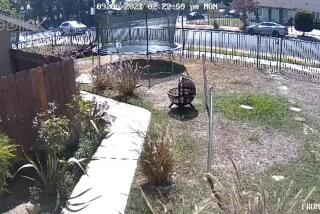Wrecked Car’s Diminished Value Is an Issue
- Share via
State Farm Insurance, the nation’s largest automobile insurer with 36.8 million vehicles under its coverage, is adamant that when it pays to repair a wrecked car, then there exists no further claim of property damage.
It sounds pretty straightforward, but under the surface of that statement looms a nascent battle between the insurance industry on one side and trial attorneys, advocacy groups and consumers on the other.
The issue involves whether millions of motorists are being shortchanged by the insurance industry because, even after a car is repaired, its resale value is reduced simply because it was in a crash. The buzzwords of this dispute are “diminished value,” and the question is whether insurers should have to cover this type of loss in an accident.
Bernard Brown, a Kansas City, Mo., attorney with expertise in title, odometer and insurance fraud, believes that consumer losses could reach into the hundreds of millions each year. He cites estimates by the National Safety Council that nearly 19 million vehicles are involved in reportable wrecks every year.
With average claims ranging into the thousands of dollars, total vehicle accident damages reach into the billions. If even a small fraction of this damage is never recovered in repairs--in other words, the future resale value of a car is diminished--the economic consequences to the public are enormous.
“Insurers are petrified by the prospects here,” Brown said. “You are entitled to be made whole. If they only repair a car, then you are not made whole.”
*
The issue of diminished value has gained credence as states have strengthened laws that require branding of titles for salvage vehicles. Under some state laws, damage well below the level at which insurance companies “total” the vehicle are branded as salvage. In addition, states are requiring ever greater disclosure of past damage when a car is sold.
Brown contends that insurers have opposed strong consumer laws that require title branding on salvage vehicles, because it will increase the industry’s vulnerability to paying for diminished value on vehicles that are branded.
Meanwhile, insurers have warned that if trial attorneys and consumer groups open the floodgates on litigation over diminished-value claims, and such claims are eventually upheld in the courts, insurance rates are bound to go up.
“We believe that if a car is repaired properly, there is no diminished value simply because the car has been in a crash,” said Dave Hurst, a spokesman for State Farm in Bloomington, Ill. “If it is restored to the condition that it was in before the crash, there is no diminished value.”
That may be logical in most cases, but used-car buyers often are not logical. Given the choice between two identical used cars, except for the fact that one was in a major crash, it’s a safe bet that most buyers would choose the car that was accident-free.
Robert F. Brennan, a Glendale attorney who specializes in automobile litigation, notes that every wreck is unique. The economic impact of a crash will depend on such obvious issues as whether a car has sustained cosmetic or frame damage and whether the car is a newer or older model, among much else.
Other experts caution that in many cases diminished value will be difficult to prove and that, at least in some cases, a wreck and subsequent repair may actually increase the resale value of a car.
Automotive Collision Consultants, a Long Beach company that conducts accident investigations, notes that accident repairs can sometimes increase the value of a car. If an older car is in a moderate accident, then a new paint job, radiator, battery or tires can raise its resale value.
But the opposite is true for a brand-new luxury car involved in a serious crash. Moreover, a new car has to have a huge amount of damage to be considered totaled by an insurance company in the first place.
*
The rule of thumb used by insurers is to total a vehicle if the cost of repair exceeds the market value less the salvage value of the unrepaired car. Thus, a car with a current market value of $20,000 and a salvage value of $2,000 could be repaired even if it required $18,000 of work. That means major structural and frame damage is often repaired on such cars.
But the record of the auto body industry’s ability to repair such cars is spotty at best. In too many cases, auto body shops lack the expertise and equipment to adequately realign unibodies that are badly damaged, according to experts at Automotive Collision Consultants.
And even if a car is fixed to the best possible standards, that doesn’t solve the problem of diminished value.
Most prospective buyers would shun buying a late-model used car that had been in a serious accident, out of concern that suspension and mechanical systems were never repaired properly. In addition, body shop paint jobs seldom have the quality and durability of the original factory paint.
Ralph Vartabedian can be reached via e-mail at ralph.vartabedian@latimes.com.





